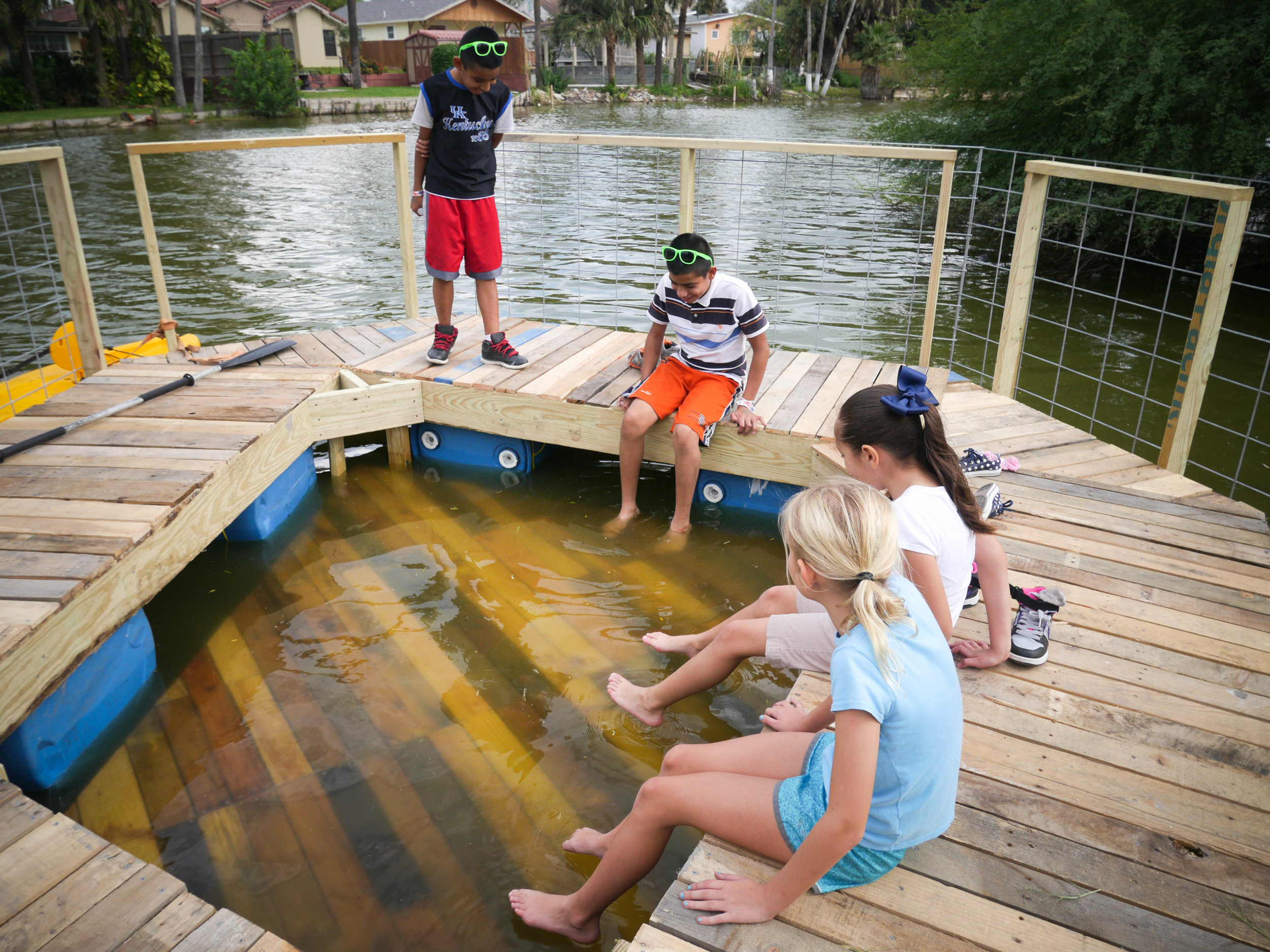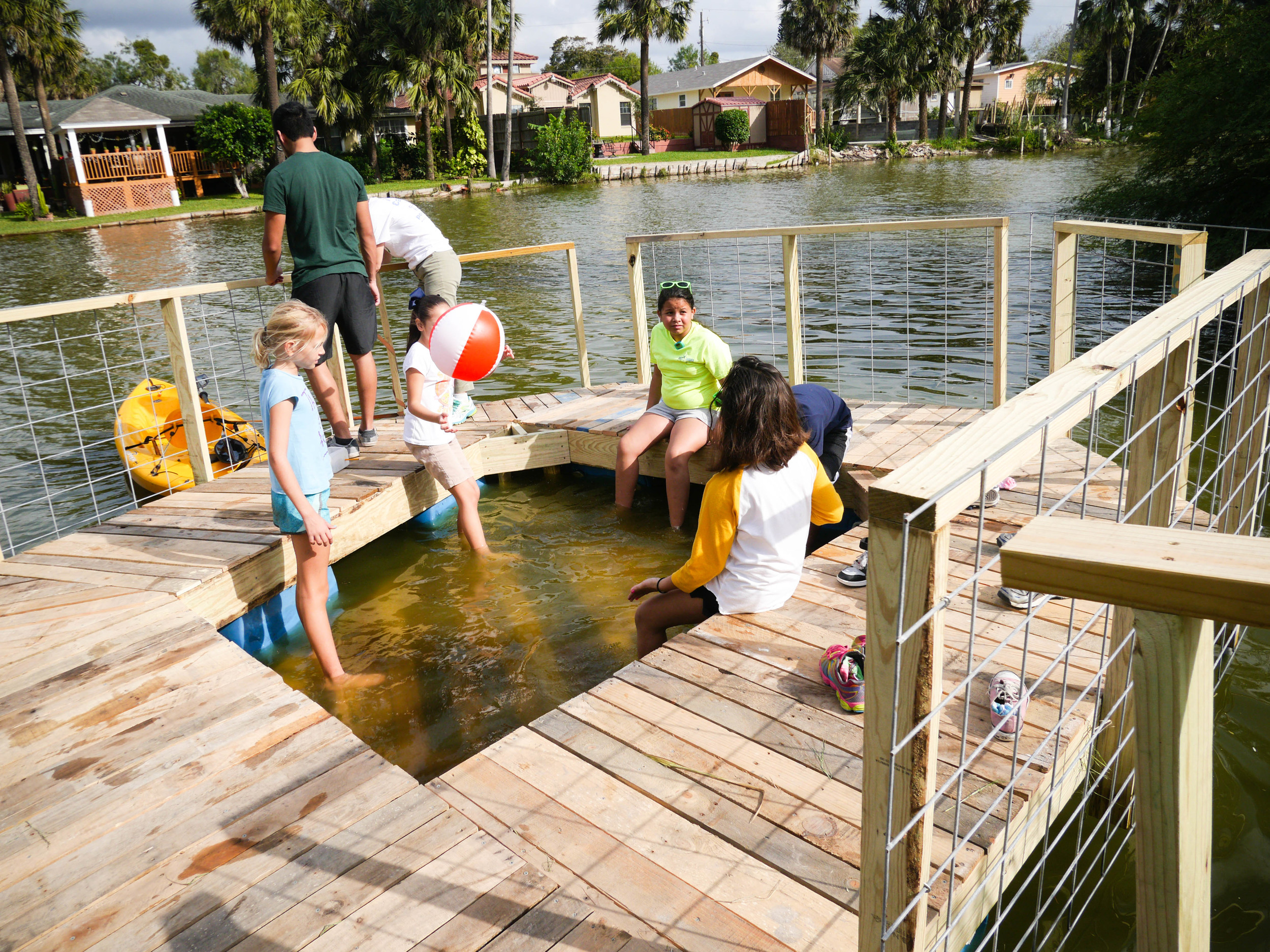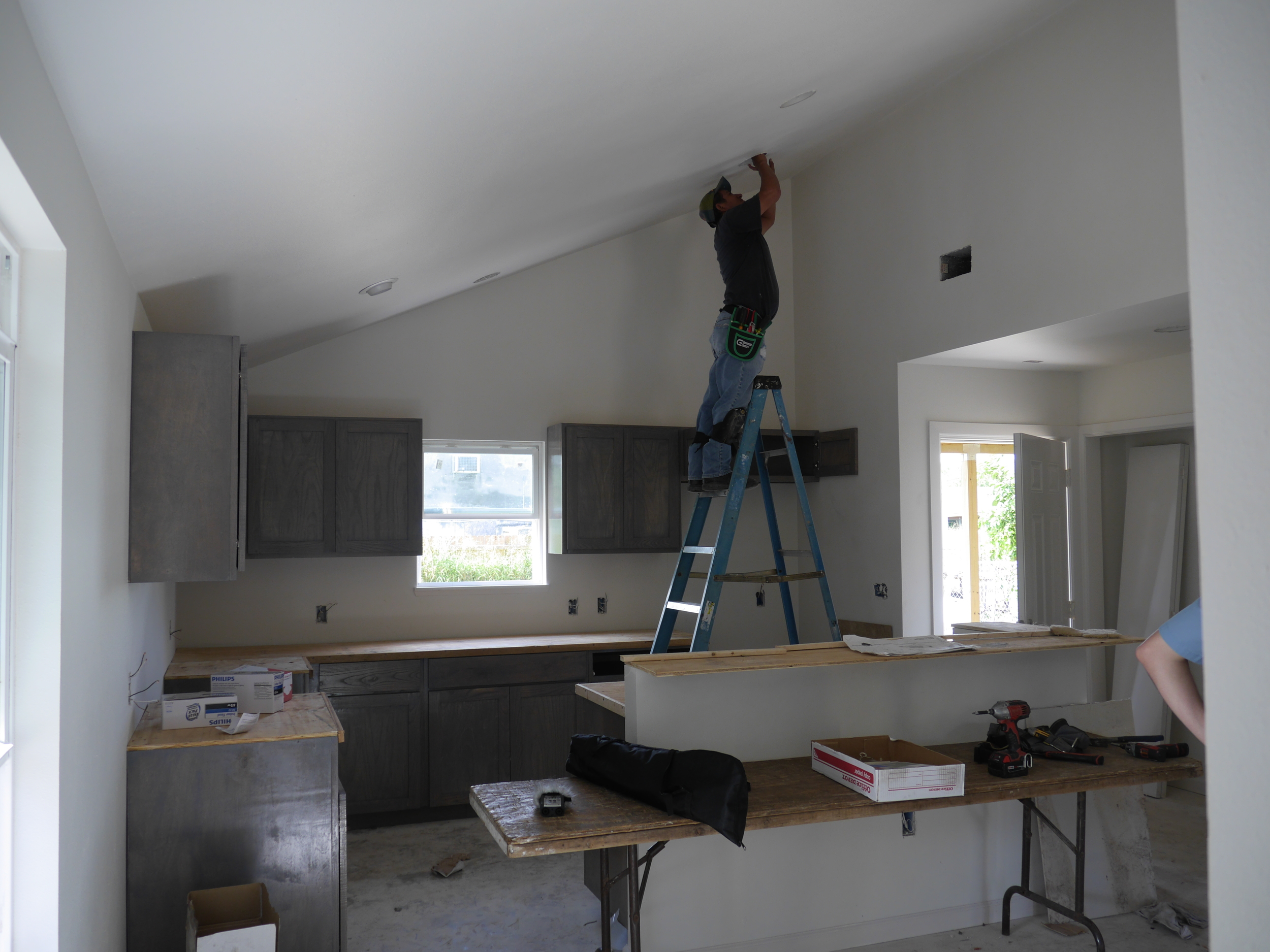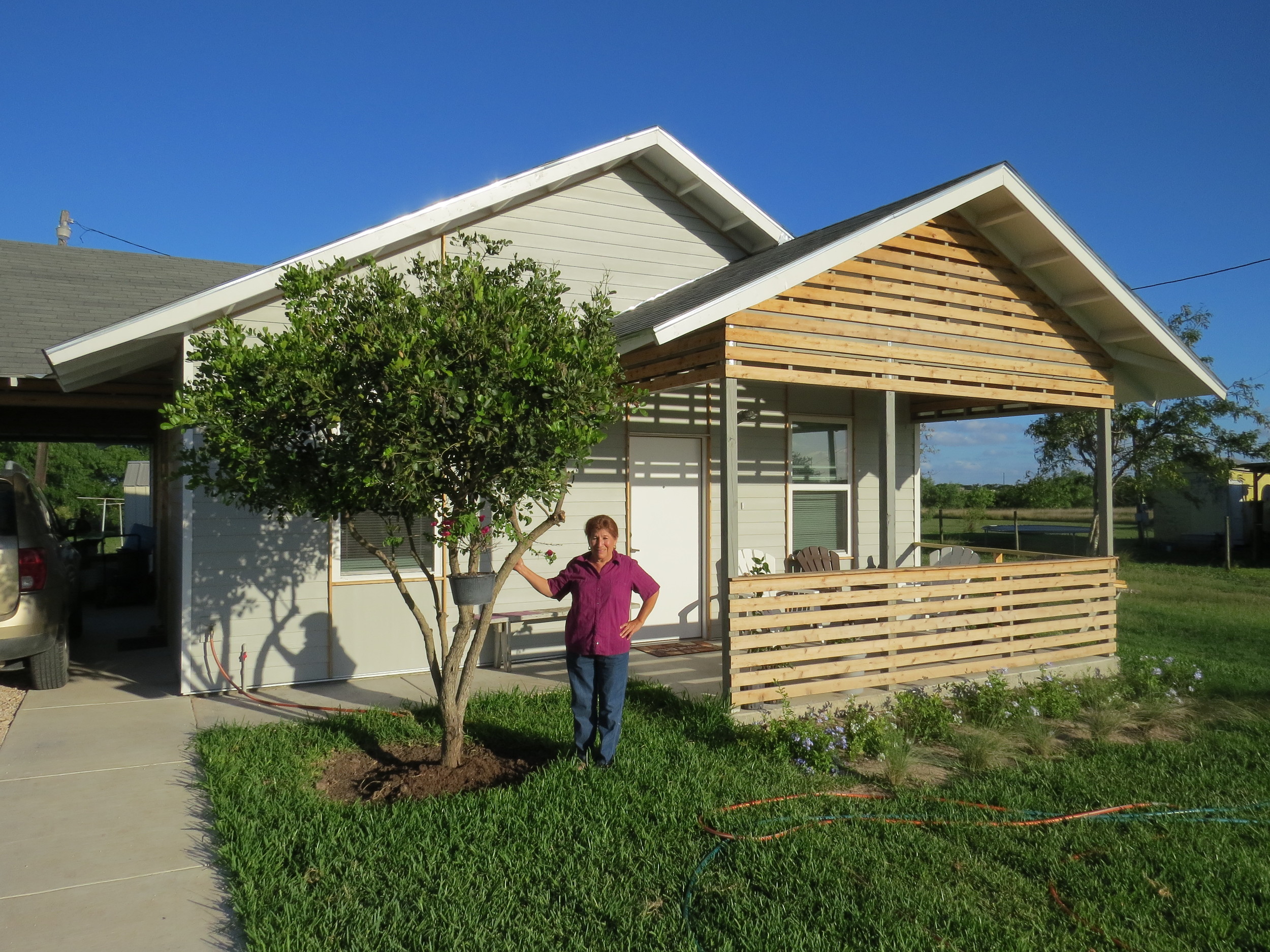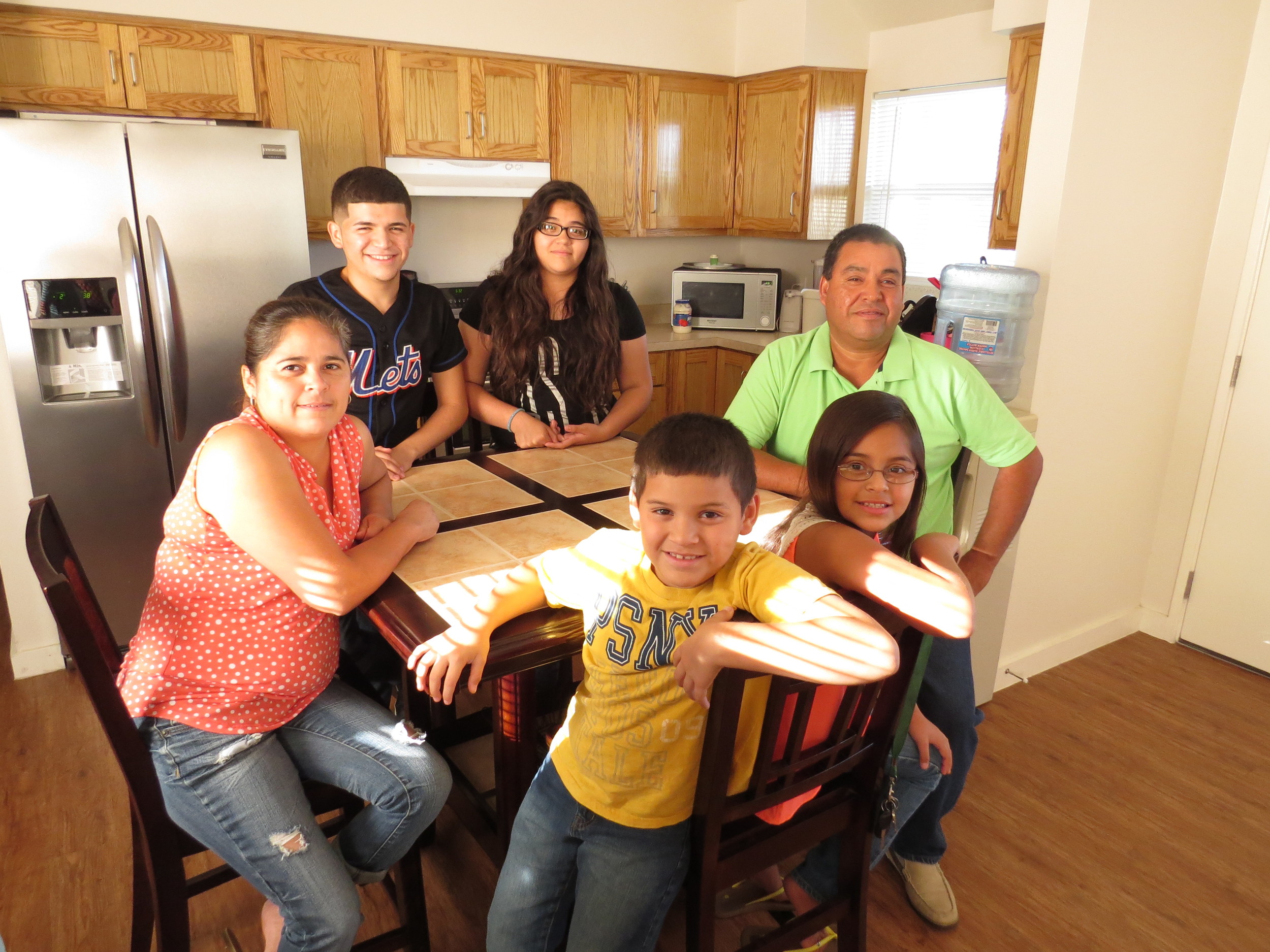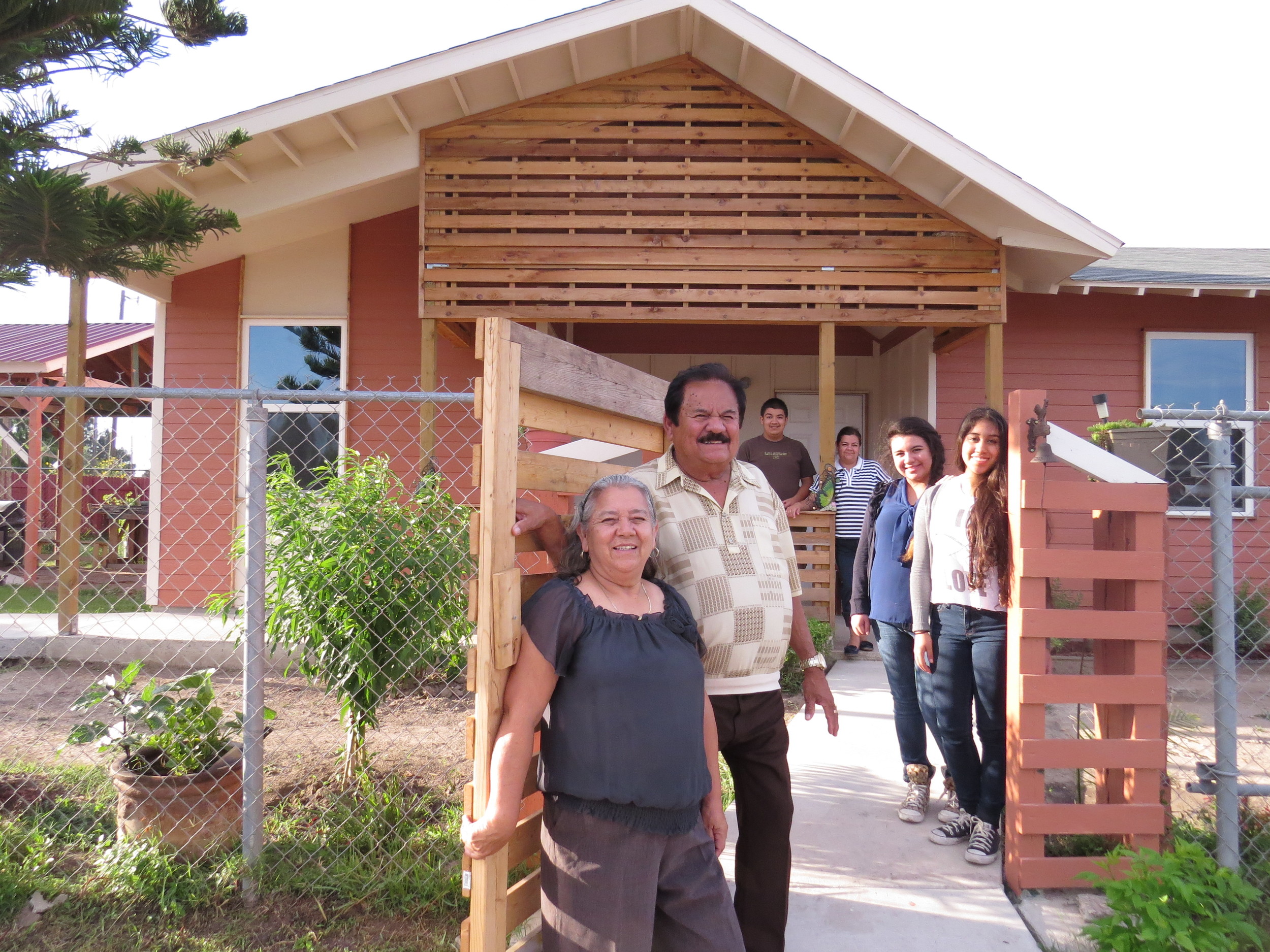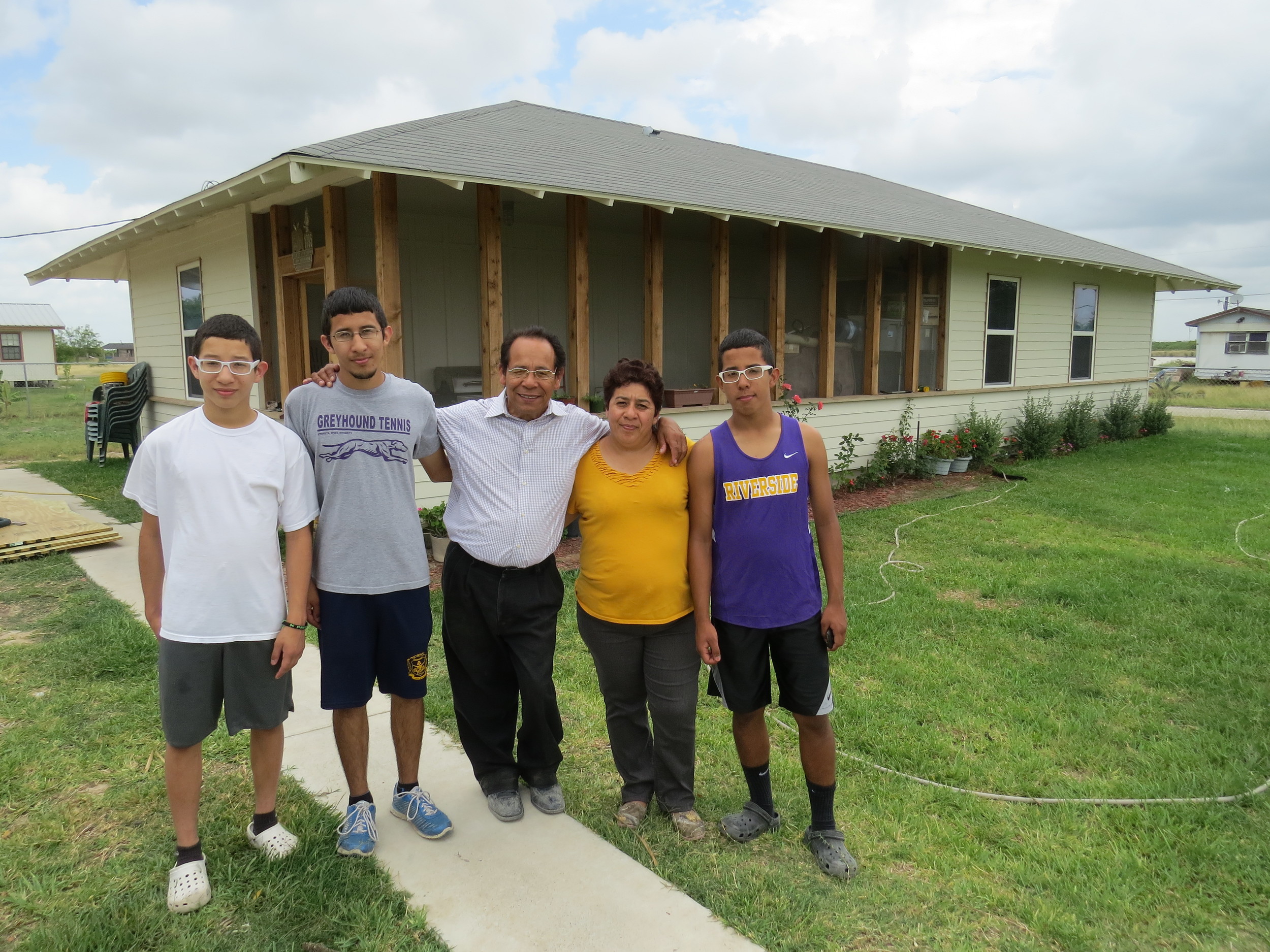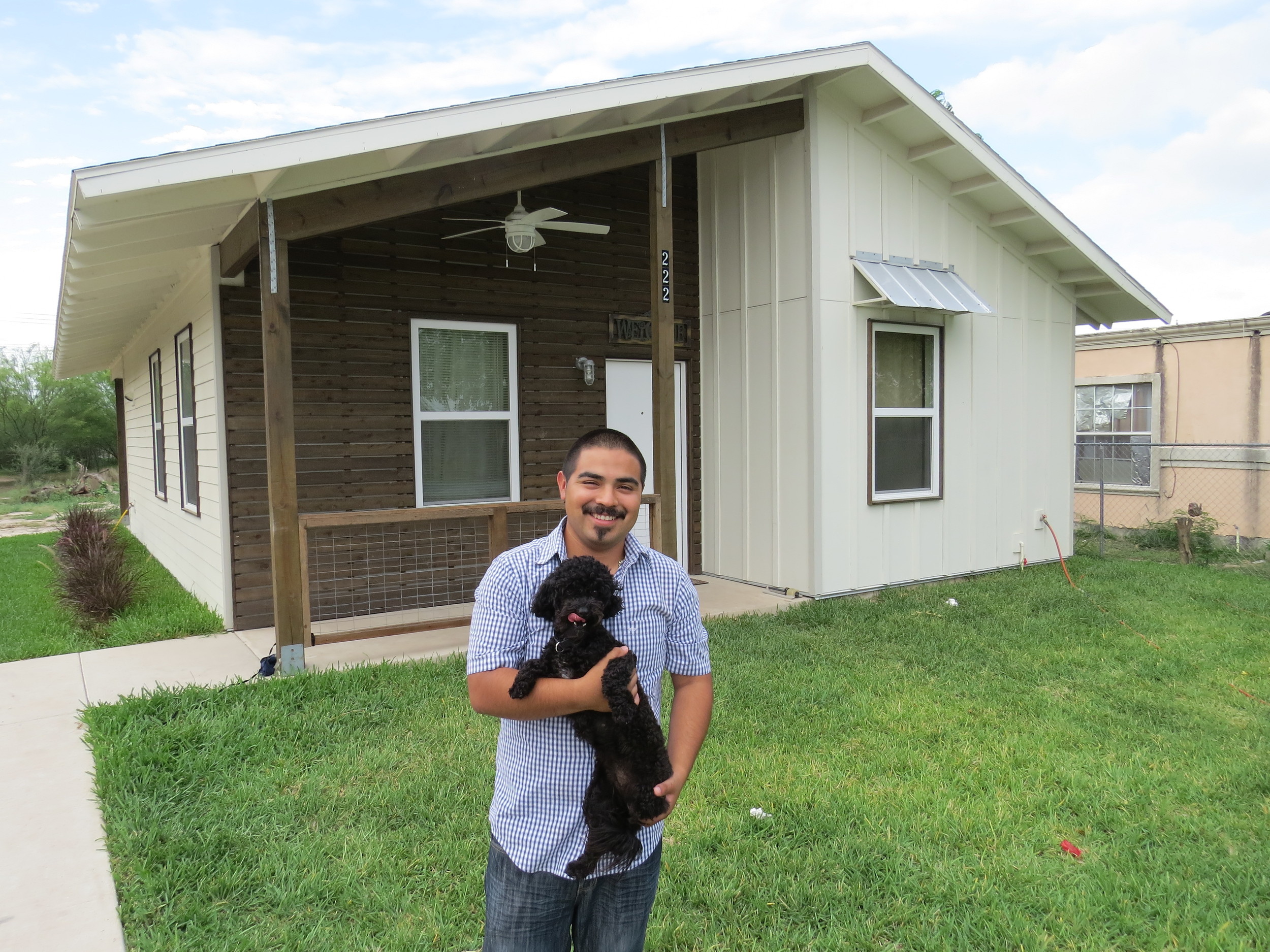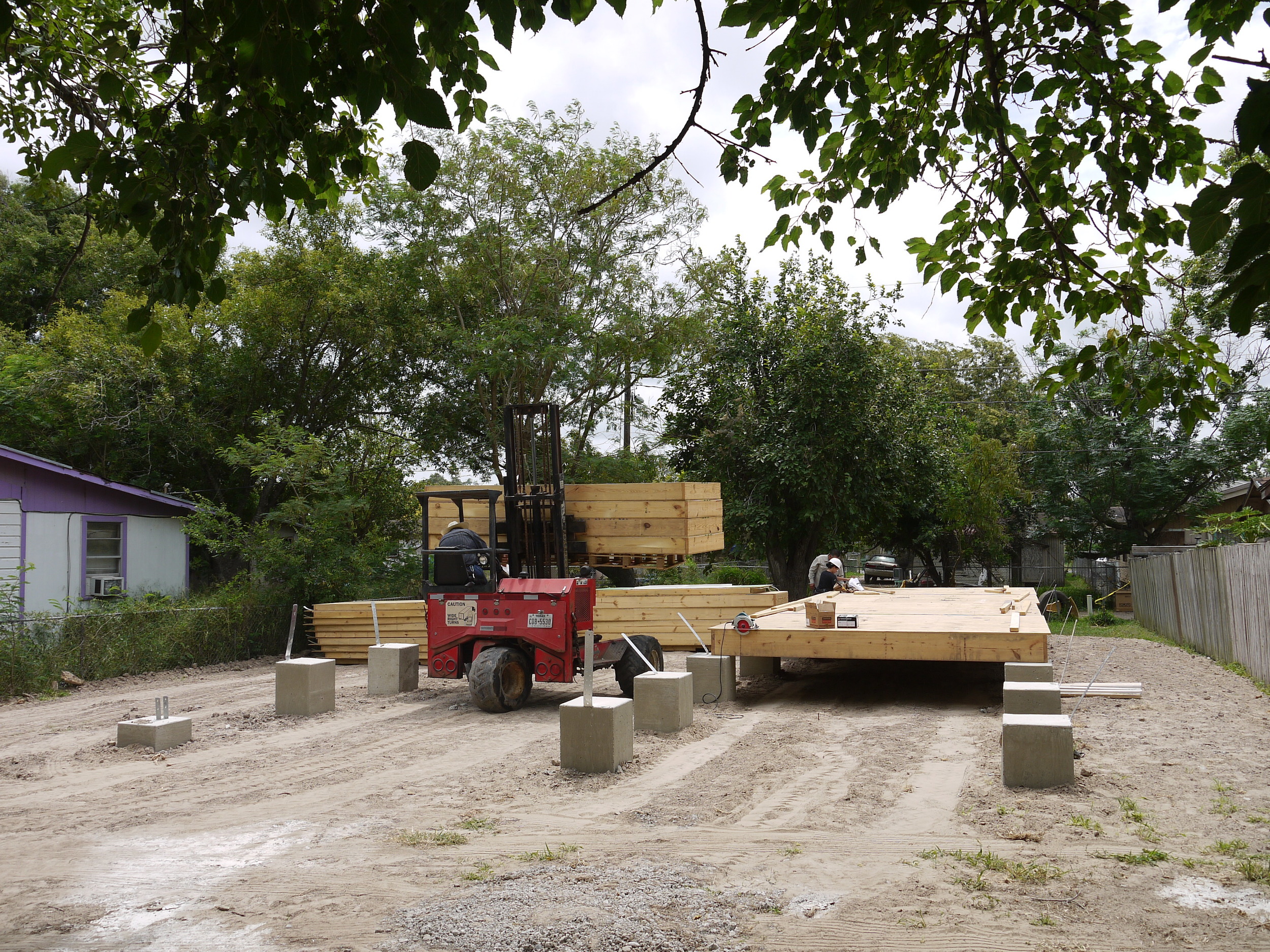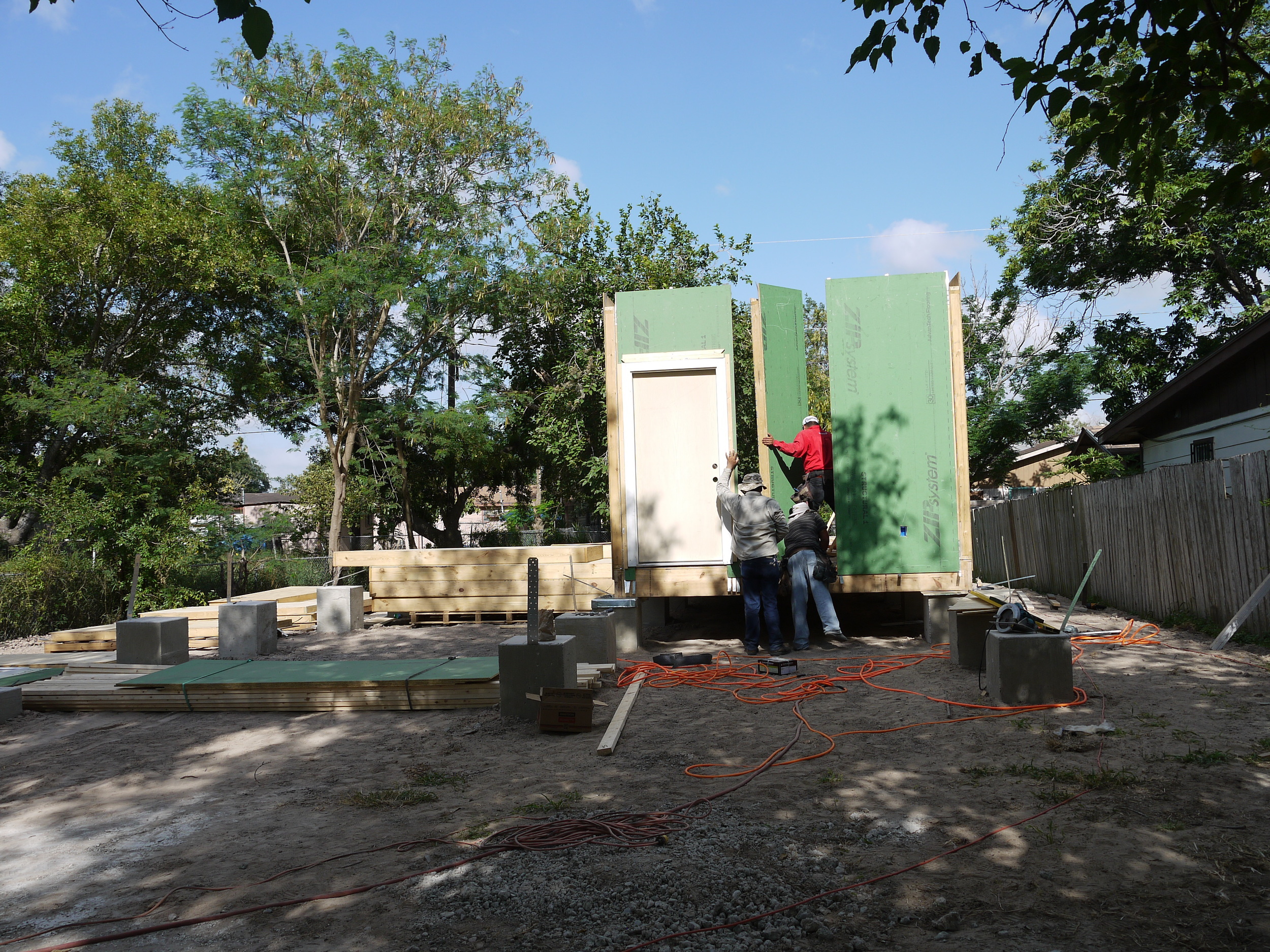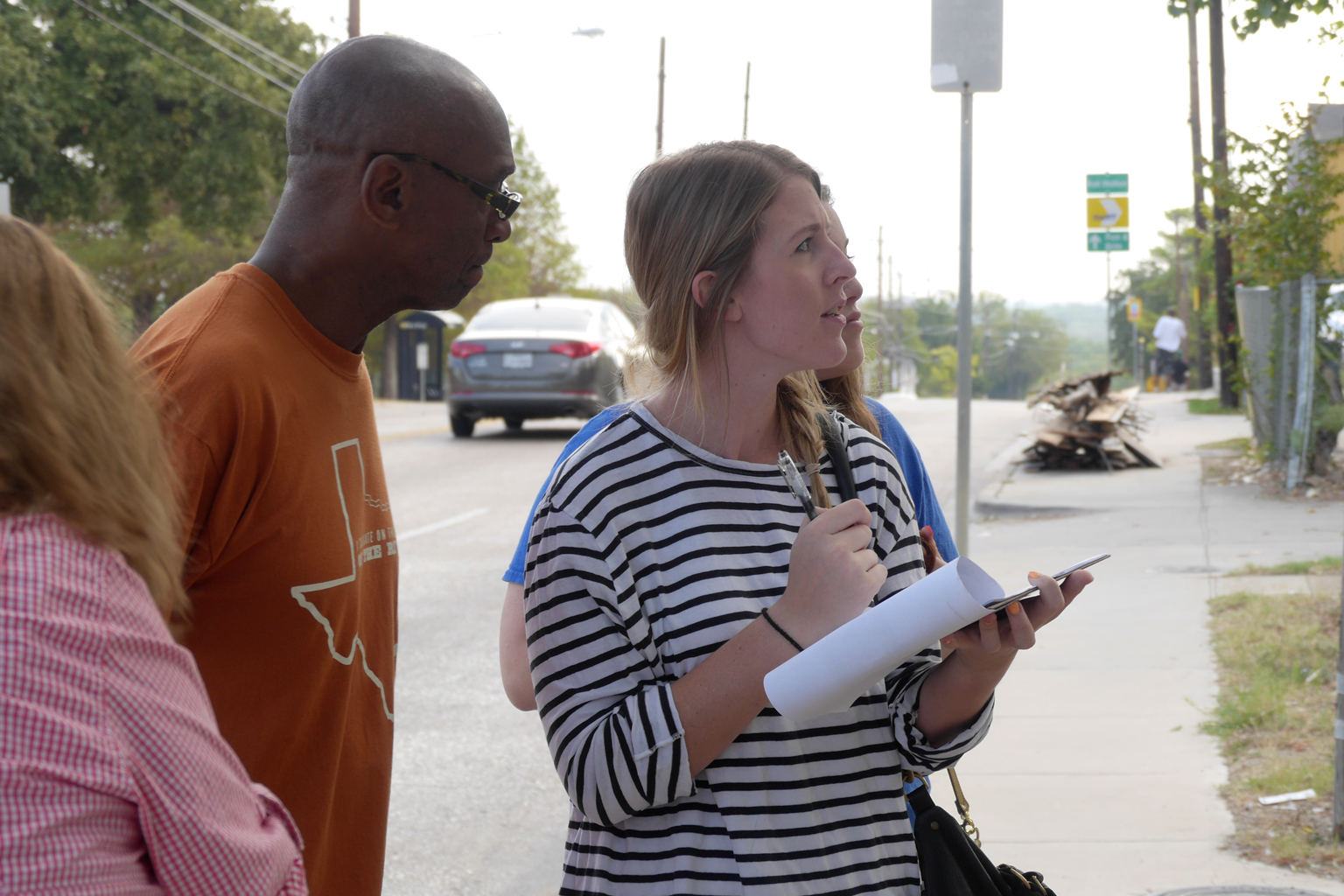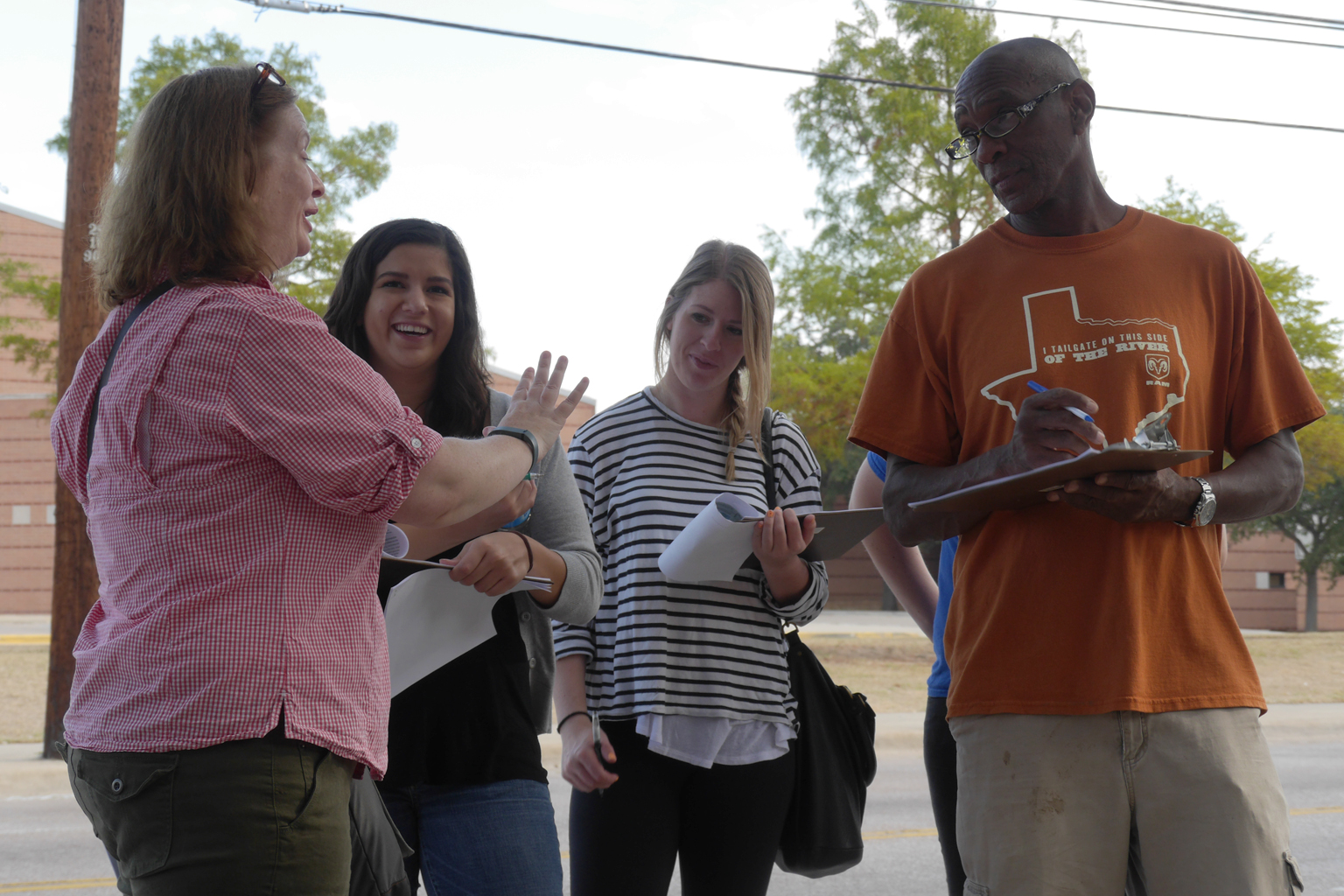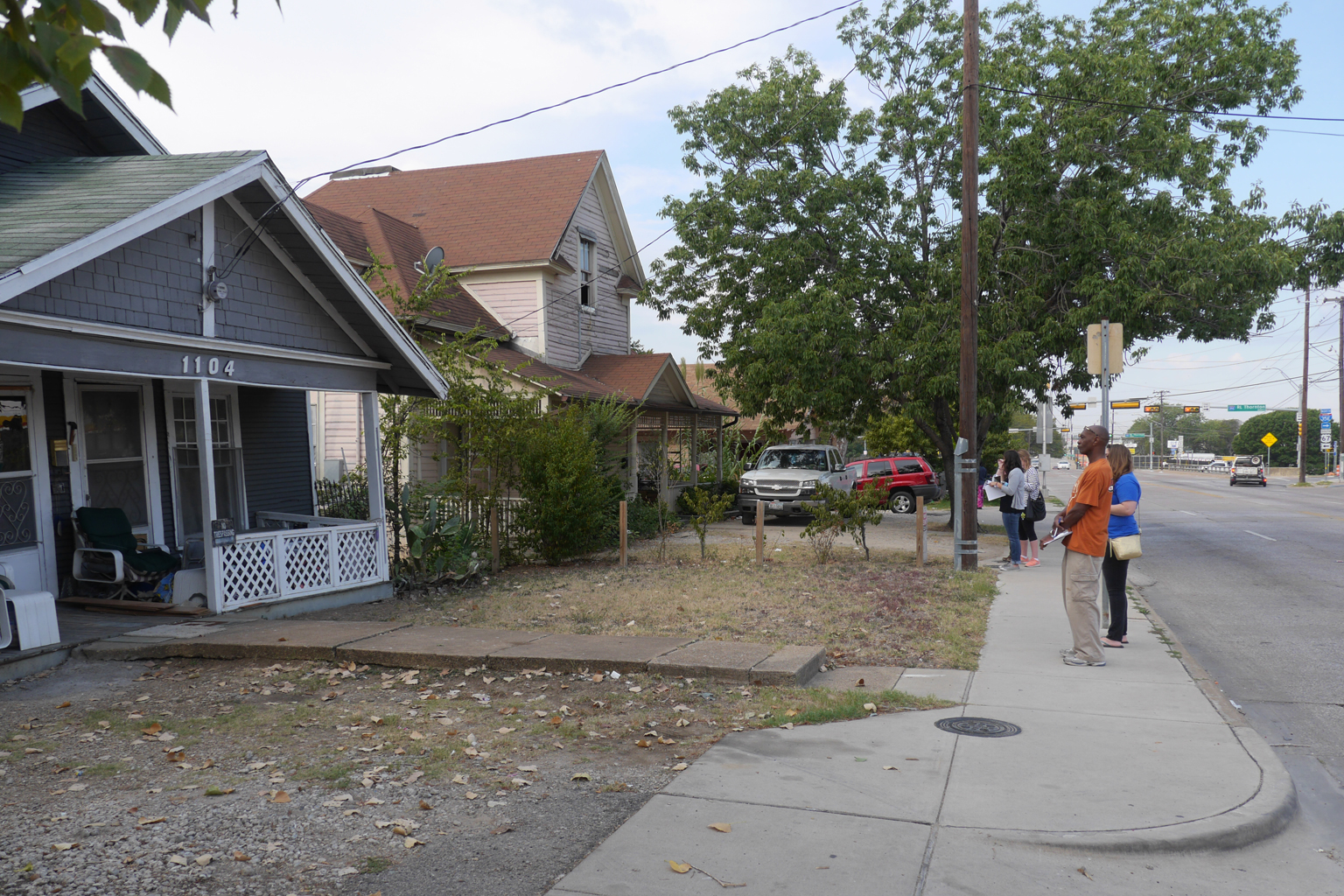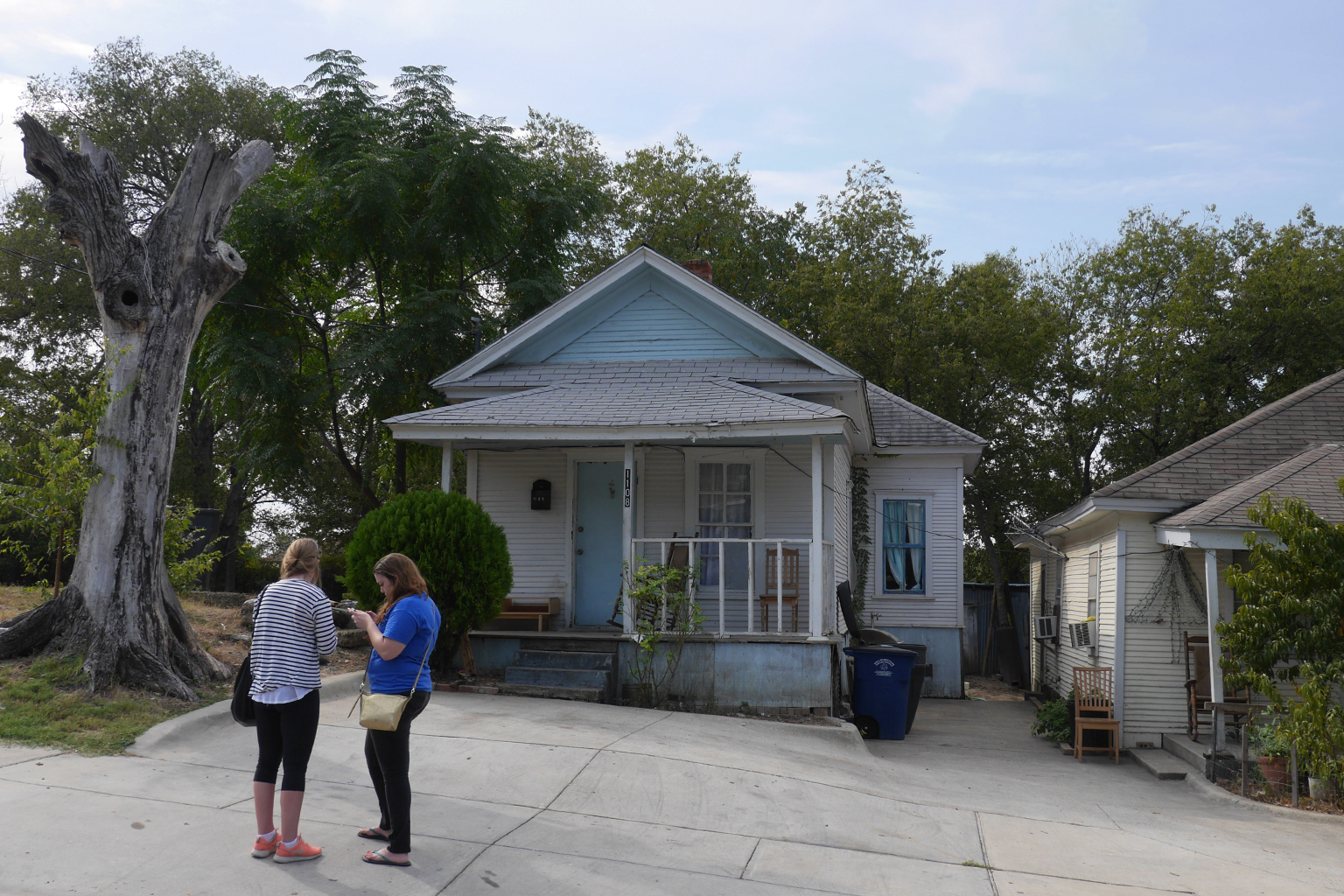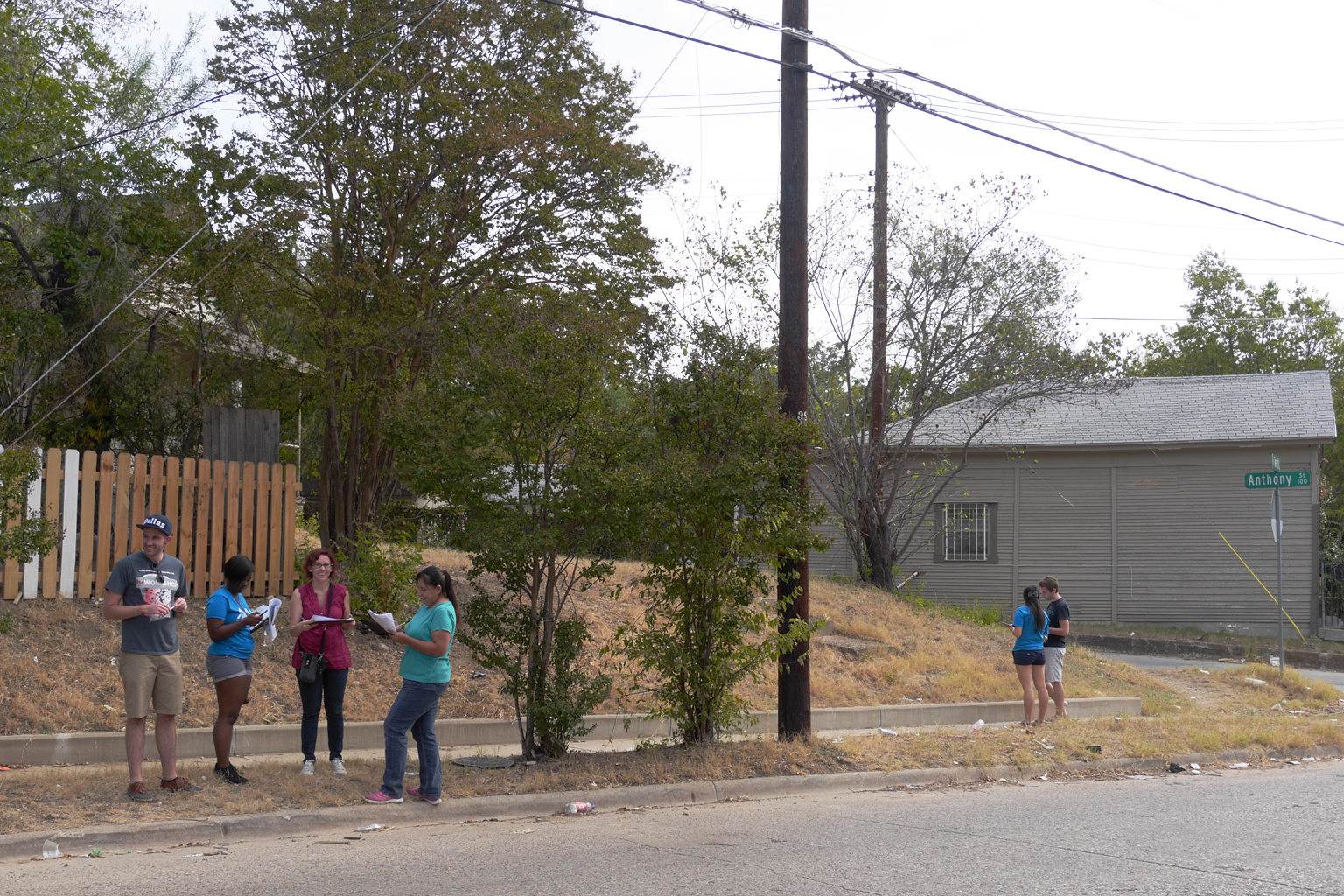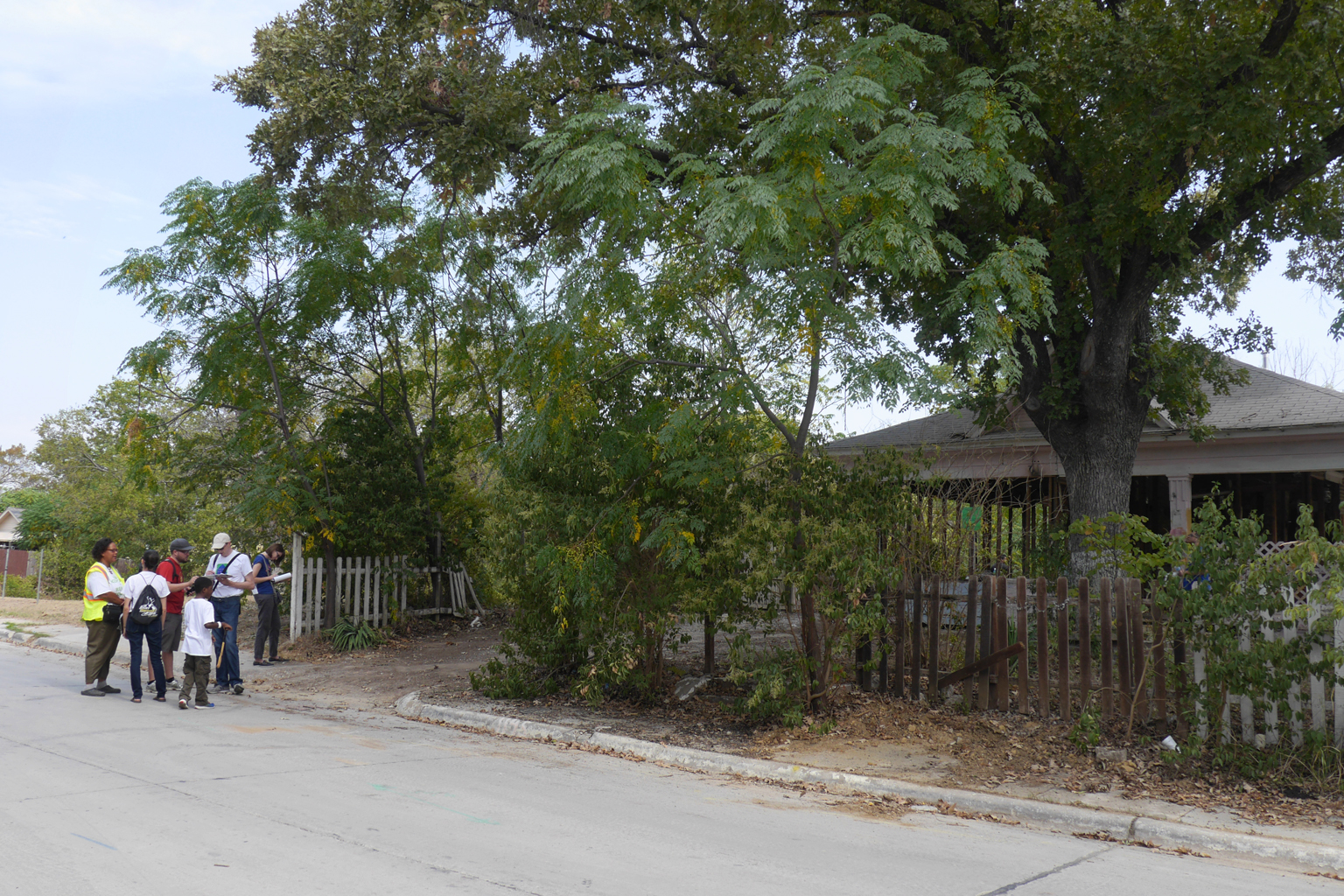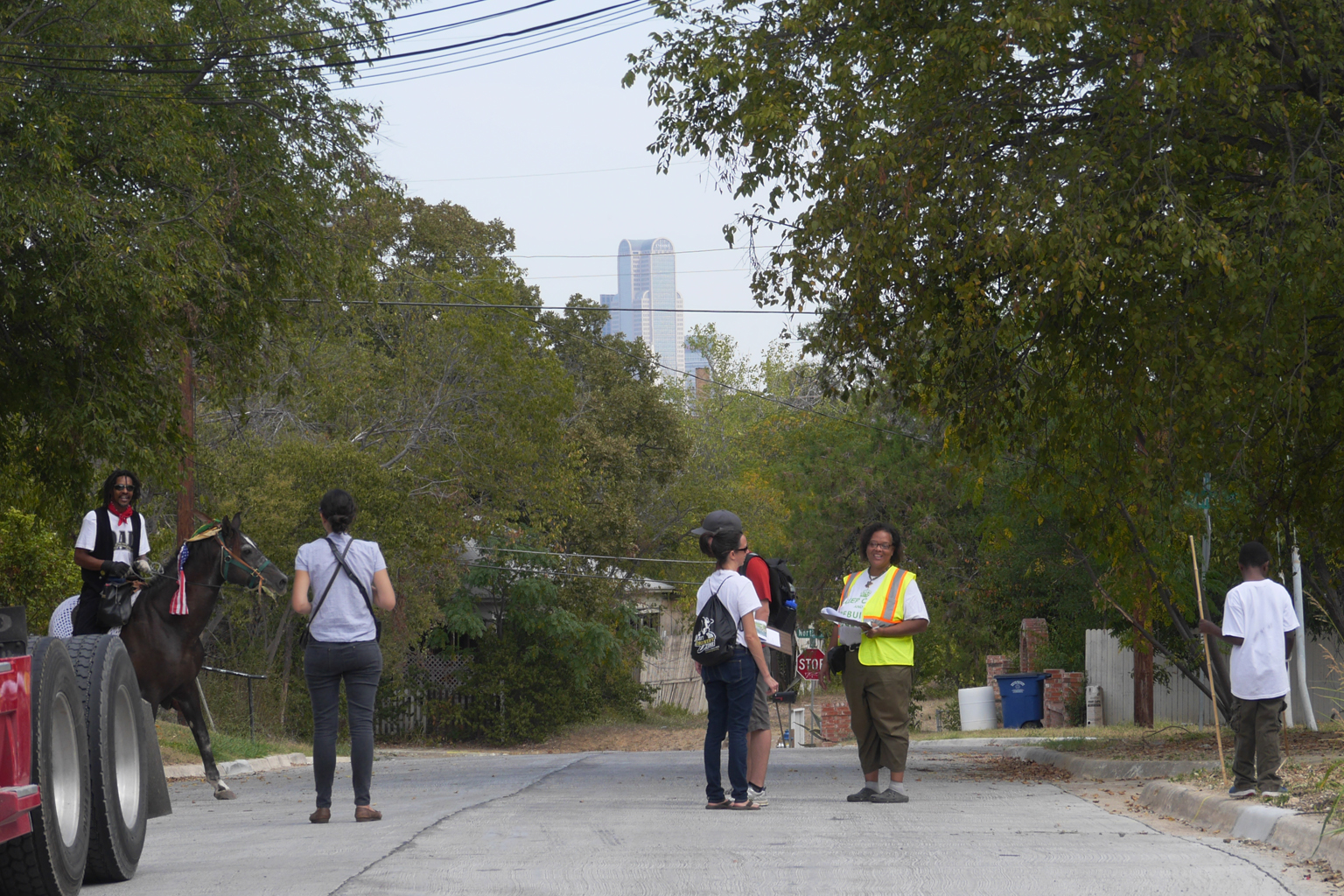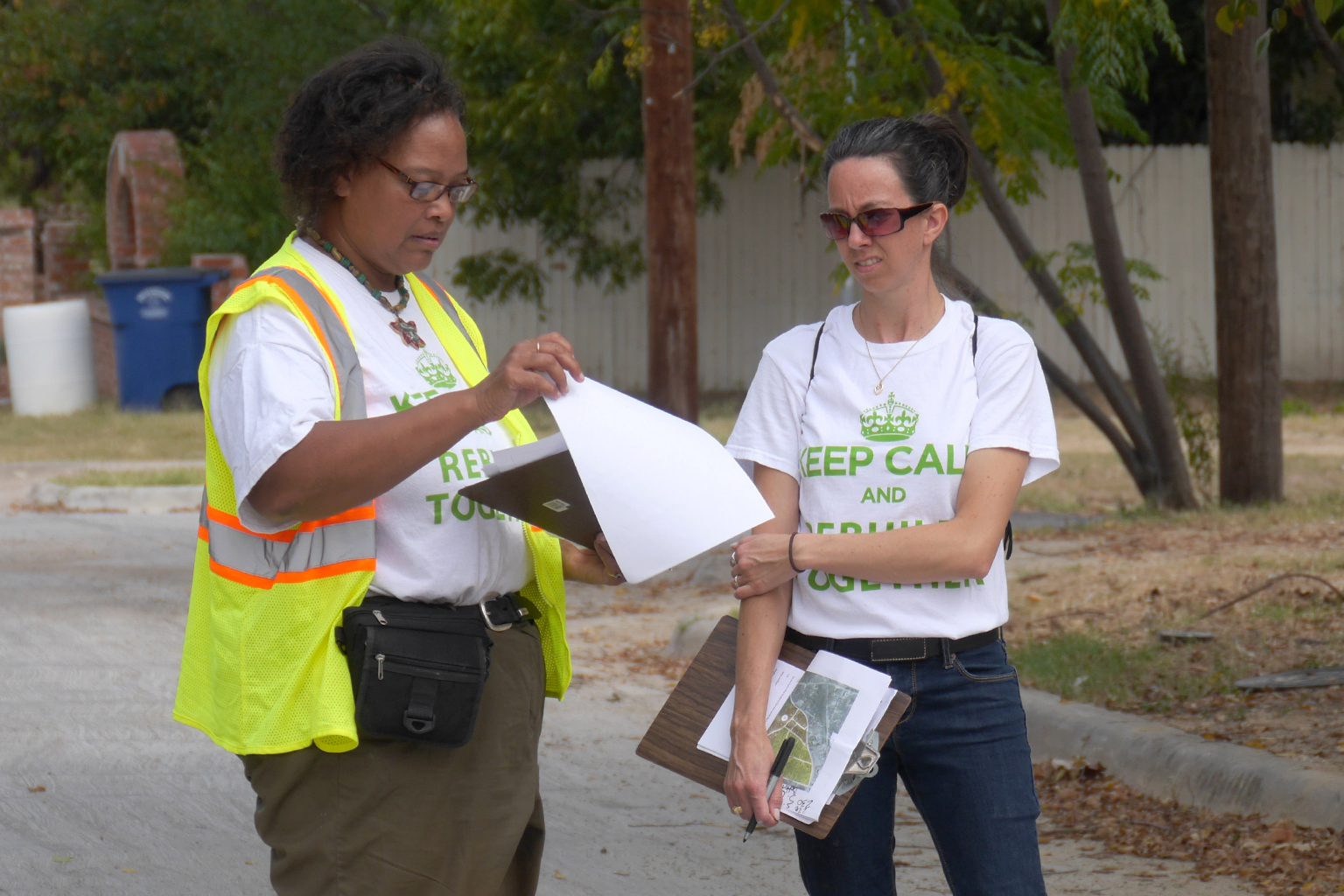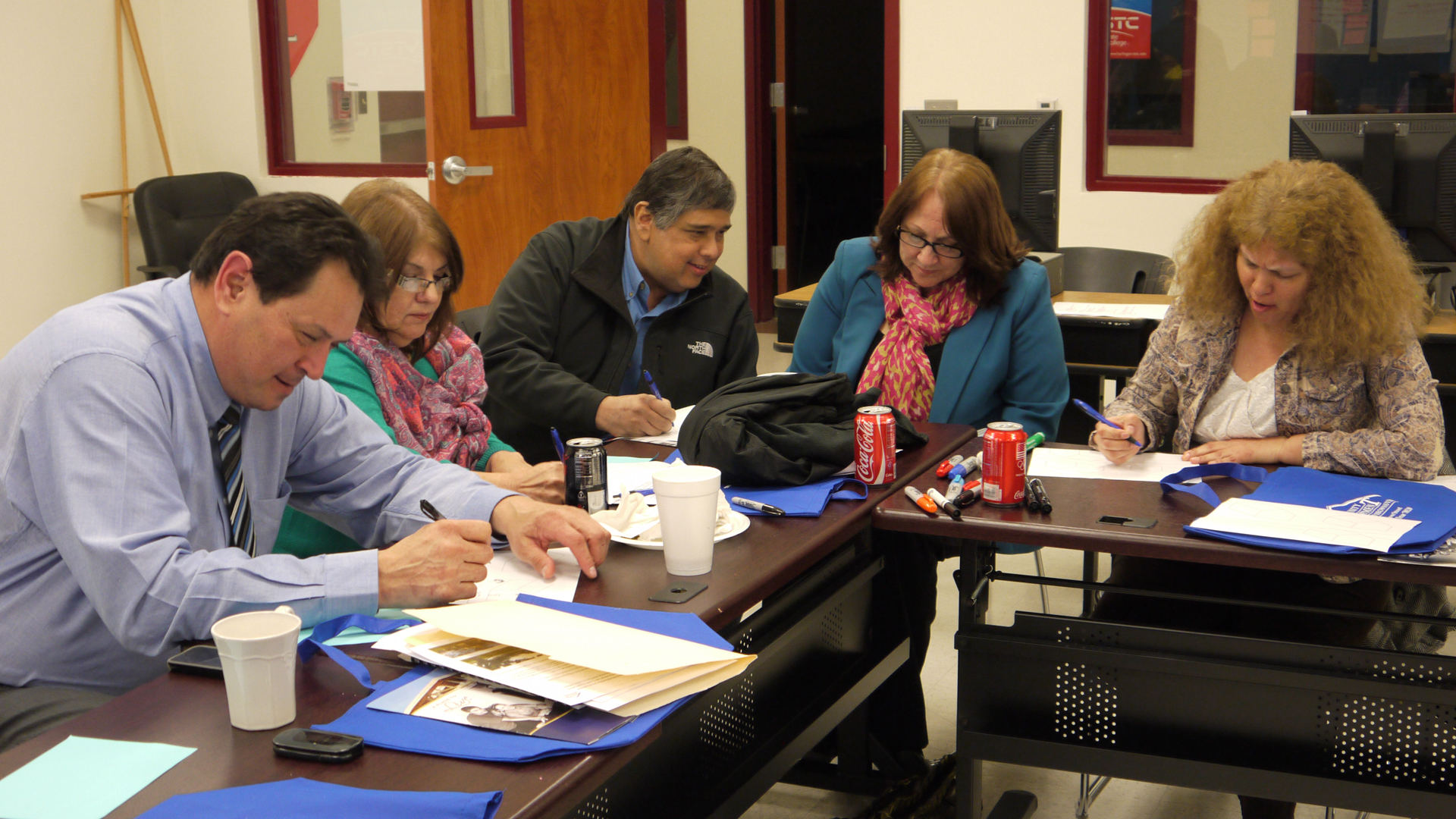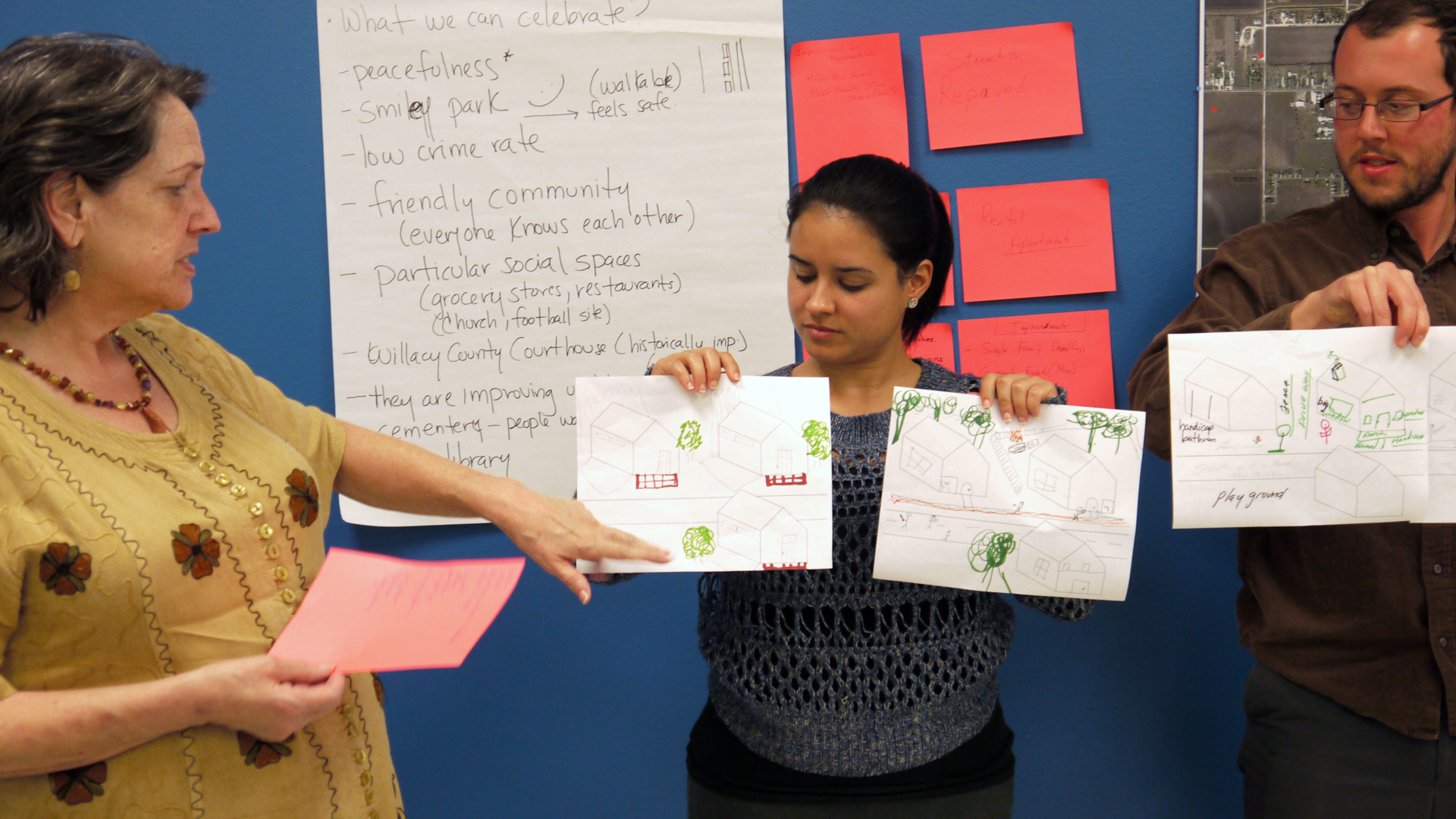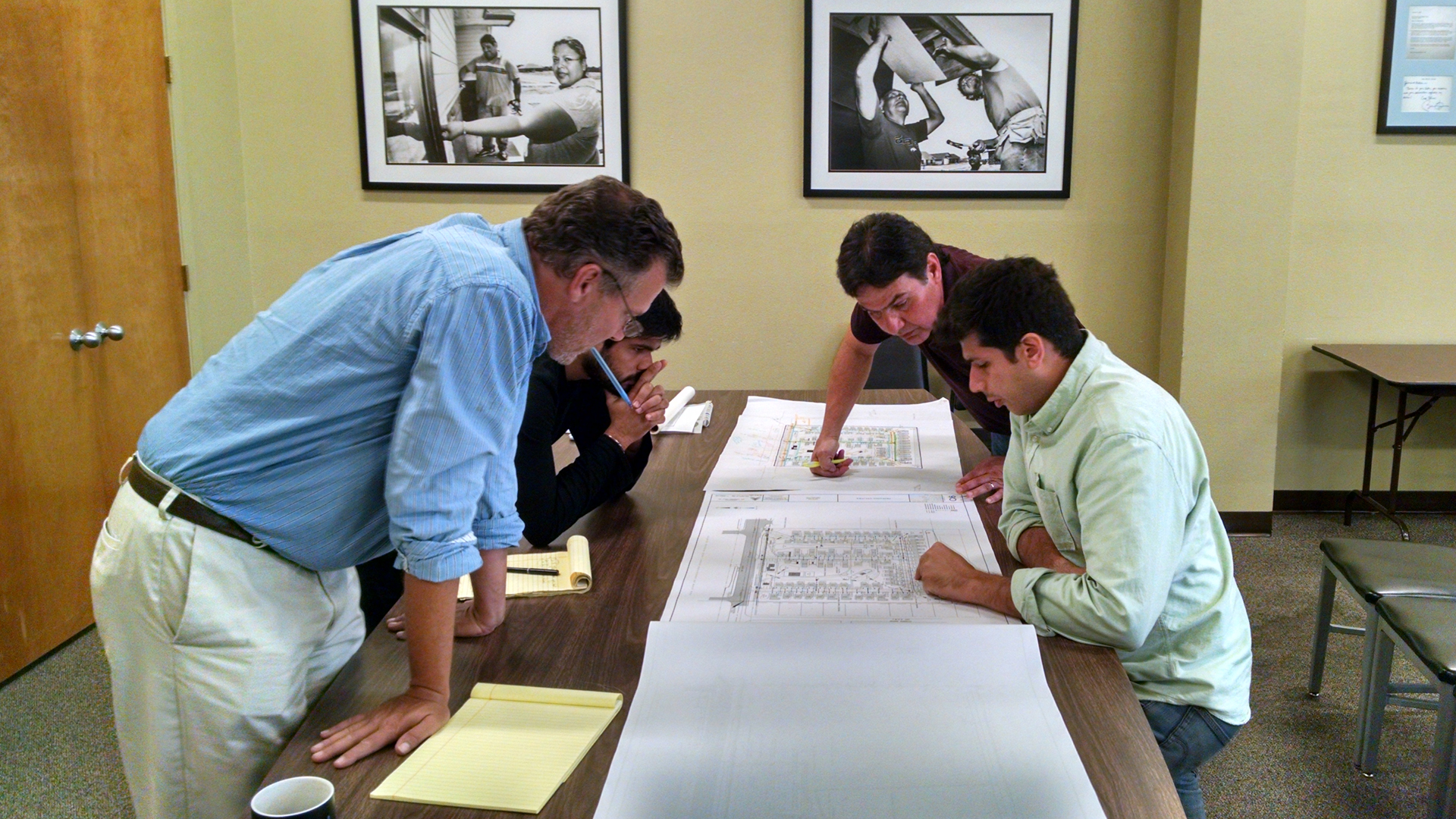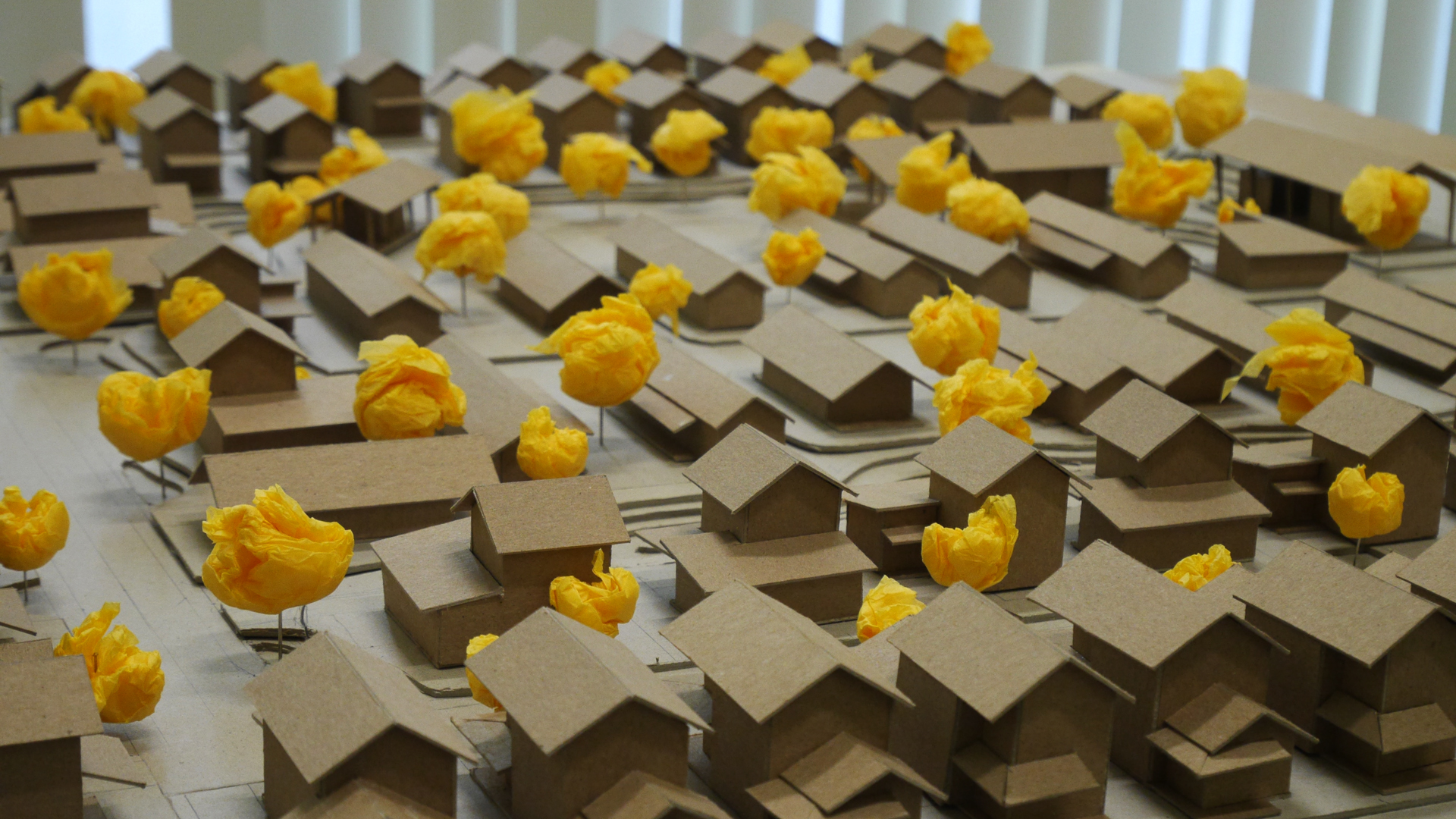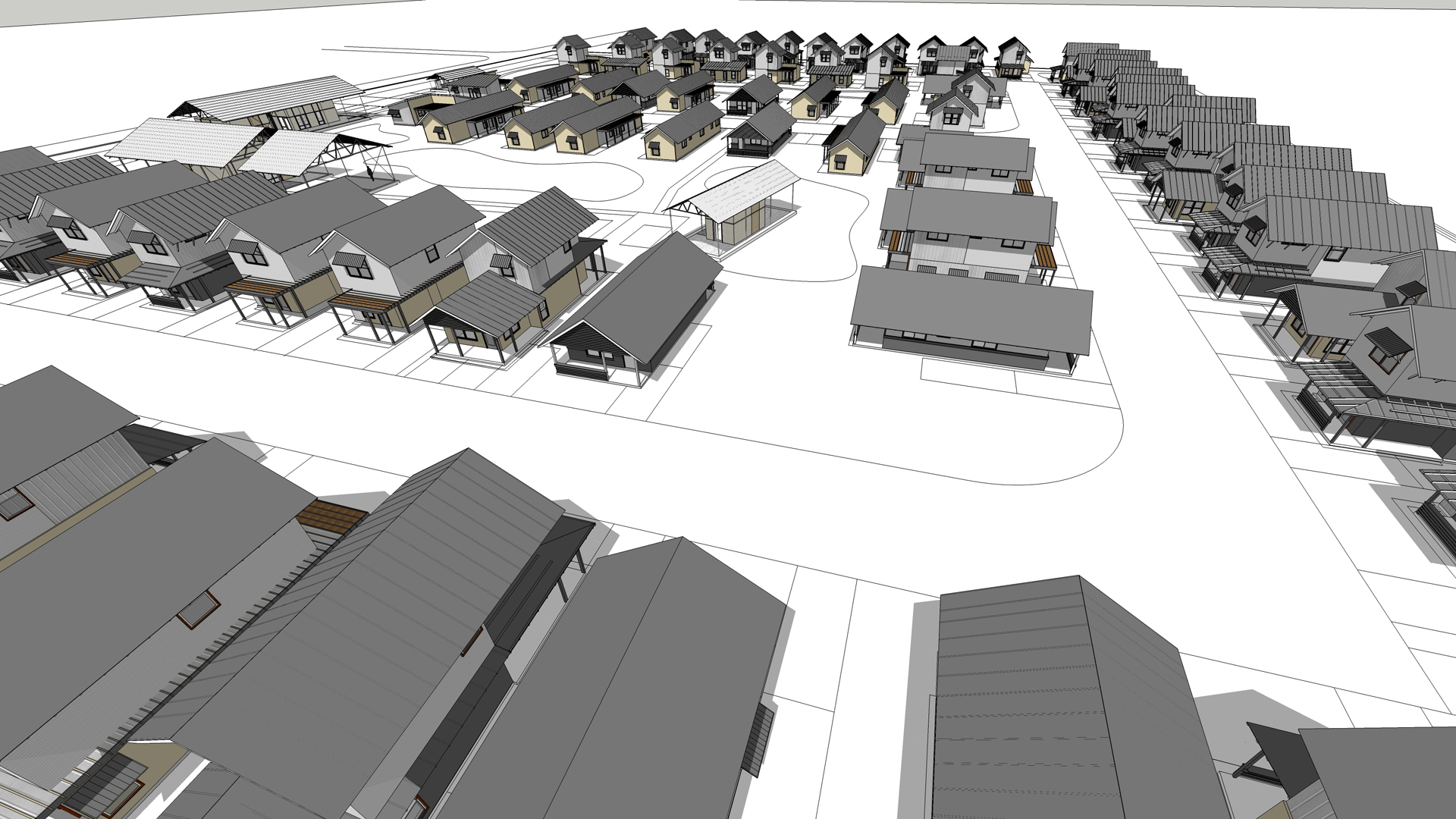Many social issues can be successfully addressed through thoughtful design and planning interventions. We have found that the partnerships between designers/architects and community-based organizations are mutually beneficial, building the knowledge and experience of both to better serve others. With that in mind, [bc] is inviting community groups/organizations to submit design project proposals to be matched with local design professionals and services. This year, [bc] is beginning an annual Request for Proposals asking you to tell us what your design needs and project ideas are.
Read MoreCelebrating Local Heroes
Learn more about our MLK Day of Service projects here.
Dr. Martin Luther King Jr. challenged us to build a more perfect union and taught us that everyone has a role to play in that effort. For our 2015 service project in his honor, [bc] set out to recognize some of those who serve their communities by releasing the Second Edition of buildingcommunityHEROES trading cards. By creating a fun, tactile, and pocketable way to learn about those working to improve our communities, we hope to encourage those of all ages to honor their heroes and engage in the causes that speak to them.
We put out the call for local hero nominations at the beginning of January and received just over 100 nominations for those working tirelessly in Dallas, Houston and the Rio Grande Valley. Nominations included selfless family members, state senators, founders of schools, advocacy group members and fearless neighborhood leaders. It was not easy, but from here we researched and curated the nominations to get a final group of heroes with a diverse range of causes, ages, backgrounds and levels of impact. After the final selections were made, the cards were printed, sorted, packaged and ready for a January 19 distribution.
We distributed the cards on Martin Luther King, Jr. Day and throughout the week in Dallas, Houston and the Rio Grande Valley. We hope that the stories of these 24 heroes will inspire people to be more active in their communities. We also hope that the cards will encourage people to think about and honor their local heroes. If you were not able to pick up a pack, check out all 24 heroes plus 2014's at www.buildingcommunityheroes.org.
Who is your hero? Share them on social media at #bcHEROES2015 and nominate them for the third edition of trading cards!
Production & Choice for Infill Housing
See more posts about AIM for Dallas and our work in Dallas
As Dallas continues to see new investment and new housing opportunities, it is critical that affordable options remain available or are created throughout the city, and that the local development community have the capacity to deliver those options.
In September, 2014, [bc] hosted Lab #1 of AIM for Dallas. The lab brought a group of local, regional and national practitioners and experts together to discuss and prioritize the challenges currently inhibiting affordable infill housing production. The group reconvened a second time to determine deliverable solutions for AIM for Dallas goals, discuss housing markets and development cycles as they relate to affordable infill, and apply these goals and market-thinking to realistic development scenarios in Dallas.
Over the course of the fall, [bc] researched the challenges to affordable infill housing that were listed and prioritized at September, 2014’s Lab #1. From this research, [bc] developed case studies exploring solutions to similar challenges from cities around the country. These case studies evolved into a set of goals for AIM for Dallas that would result in deliverable products.
In December, [bc] hosted a webinar where AIM for Dallas’s advisors gave feedback on, modified and confirmed the initiative’s goals.
At Lab #2, advisors suggested deliverables and frameworks for pursuing these goals. Collaboration and information sharing was a common theme across the goals listed. Another theme that emerged was the need for targeted, coordinated neighborhood investments to ensure the most efficient impact. This idea led into a dialogue about the value of market-based awareness in affordable infill delivery. In the final exercise, advisors were divided into four groups with each group piecing together a development plan for a real vacant site within the city, including consideration of market trends in each site’s neighborhood, site configuration and location, and community engagement.
Moving forward, AIM for Dallas will focus on distilling the large set of goals and solutions into five action items, as part of a proposed collaborative. Lab #3 will be held in the Spring with a focus on confirming these action items, establishing a collaborative, and continuing to examine development opportunities as a group.
Affordable Infill Model (AIM) for Dallas is a multi-year project, generously supported by the Citi Foundation, designed to address gaps in the supply and demand for affordable housing in Dallas. The outcome of this process will be a set of solutions intended to guide the city toward a new market-based model for the creation of affordable infill housing through the use of currently vacant land.
Rafting the Resaca
Learn more about our work in the RGV!
As one of the many events along the Cyclobia route, the Resaca Raft and Regatta was an event set up to re-engage Brownsville residents with one of their most under-utilized natural resources, the resaca. Resacas are abandoned channels of the Rio Grande River that were left behind as centuries of silt build-up and flooding forced the river to jump its banks and find a new path. This pattern of natural erosion and sediment build-up has left Brownsville with a beautiful but neglected necklace of waterways that flow throughout the city.
For this event, [bc] completed a "resaca raft," a donut shaped floating platform with a submerged internal platform built from recycled lumber and plastic drums. The lowered platform and surrounding bench condition encouraged people to do one simple thing: get their feet wet! For nearly every resident that came to experience the raft, it was their first time floating, boating, or touching a resaca. Accompanying the raft was a series of educational signs, explaining the resaca's natural ecology, history, and what is next for the future of our resacas. Kids got involved by building their own plastic boats out of recycled materials.
Outside of the direct physical experience, [bc] wanted to give resaca raft users the opportunity to ask the question, "Why wait years for the multi-million dollar park construction that is planned along the resaca? Why not do something fun now?" It doesn't have to be expensive, and it doesn't have to take years to bring our underutilized urban spaces to life.
Race and the Control of Public Parks
Learn more about POP Dallas.
Race and the Control of Public Parks is a 100 year history of the relationship between racial migrations in Dallas and the development of the city’s park system. An exhibit of graphical and historical research, Race and the Control of Public Parks makes evident that while parks are technically public and that all citizens are, in theory, automatically welcome, we must recognize the ways in which the design, construction, programming, use, and alteration/renovation of public parks can reinforce divisions, both physical and perceived, between populations. Launched on November 14 to coincide with the Facing Race Conference, a national assembly tackling racial justice, this project is just one component of an important critical conversation about racial inequity in cities.
To provide a comprehensive understanding of how the racial makeup of the city has shaped the design and use of public space, the exhibition was composed of four parts: a series of ten historic maps and one contemporary map that trace residential patterns by race and the parks system; an annotated timeline of the evolution of Dallas parks and park typologies over the last 100 years; a series of diagrams that illustrate parks as tools for or sites of nine types of social, economic, infrastructural, and civic controls; and a series of snapshots that illustrate the impact of these controls as they relate specifically to parks and race in the city of Dallas.
This exhibit provides the tools to interrogate the physical city and reveal the multiple ways in which we plan, build, and interact with it, exercising these tools through the lens of public parks and race. As a result of this work, parks will no longer be viewed simply as the green spaces on the map but will be recognized as places of recreation, conflict, celebration, engagement, protest, and daily life. Public parks will be seen as tools used to control social, cultural, economic, infrastructural, and civic activities.
Research and work produced for this exhibit lay the groundwork for extended work around the Control of Public Space, which will move beyond parks and look at sidewalks, streets, easements, and other forms of public space in the city. This work, like many People Organizing Place projects, gives citizens the ability to experience the city around them with new awareness, revealing hidden voices, histories, and controls that impact their lives on a daily basis. As citizens, we must work to understand our cities and to make them more livable and just for all, especially in our most public places, parks.
What others are saying:
Out of Deepwood Film
Learn more about Neighborhood Stories and POP Dallas.
Out of Deepwood, our first Neighborhood Stories film of its scale, has been released online for free. The film tells the story of the Trinity River Audubon Center, which today is a place of discovery, education, and tranquility. Yet this location, adjacent to a middle-class African-American neighborhood, has not always been so peaceful. For a quarter century, the City of Dallas turned a blind eye to over two million cubic yards of trash being dumped illegally. This is the story of the precedent-setting environmental law case Cox v. City of Dallas, Texas, the reclamation of land, and a neighborhood’s fight for justice.
The goal of our Neighborhood Stories initiative is to strengthen awareness of our city, celebrate the diverse places that give it character and texture, and create a platform for active dialogue about its history and future. The story of the Deepwood neighbors is a prime example of what can happen when a neighborhood isn’t given the attention it needs and how difficult it is for some neighborhoods to get this attention. The Deepwood neighbors protested for 25 years, but nothing changed until the courts got involved. Deepwood points to the need to fight against a “it’s not my neighborhood” attitude, as the results - social, economic, environmental, legal - can be devastating for an entire city. While an extreme example, Deepwood is a cautionary tale for any city and its citizens.
Check out what other people are saying, and learn more about the film:
- "'Out of Deepwood' Powerfully Recounts Southeast Dallas Neighbors' Fight Against Illegal Dump" - Sharon Grigsby, Dallas Morning News
- "If you watch one 23-minute documentary about a former illegal Dallas dump today, make it director Craig Weflen’s terrific Out of Deepwood." - Robert Wilonsky, Dallas Morning News
- "...invaluable perspective on the events, old and new, that have greatly impacted the city, south of downtown." - Chris Mosley, D Magazine
- "A solid look at a well-kept secret both beautiful and horrendous." - Gary Dowell, Theater Jones
- bcWORKSHOP Releases 'Out of Deepwood' Film - Impact Design Hub
Tenth Street Sweep Video
Learn more about Activating Vacancy and POP Dallas.
Hot Dog Cookout
Read more about The Cottages at Hickory Crossing.
Capstone Classic Construction, the contractor for The Cottages at Hickory Crossing, grilled hot dogs and handed out cold water and snacks on Thursday for homeless citizens surrounding the Cottages site. An important element of the Cottages is the outreach to the homeless community in the design and building of this innovative housing first model.
Expanding Affordable Housing
Learn more about sustainABLEhouse, and our sAh RGV work.
Above: sustainABLEhouse clients in Cameron and Willacy Counties
sustainABLEhouse LRGV utilizes design as a tool to address issues of equity within the Lower Rio Grande Valley by providing affordable single-family housing that is durable, efficient, contextually appropriate, and community & resident informed. Each sustainABLEhouse is the result of an inclusive design process that is rooted in informed resident choice. Affordable housing is too often synonymous with a one-size-fits-all approach that doesn’t offer any real choices for families most in need. Low-income families in search of affordable, well built housing rarely (if ever) have access to design services providing direct path toward shaping how their home will address their needs and preferences.
In addition to increasing affordable housing options for individual families, the sustainABLEhouse initiative works at larger scales to enhance the vitality of neighborhoods by infilling vacant lots and rebuilding existing substandard housing. Additionally, the initiative seeks to create and strengthen partnerships between home designers, builders, and community organizations engaged in community revitalization.
Community Organizers in Disasters
Learn more about RAPIDO and our other sustainABLEhouse projects.
Community organizers from LUPE and ARISE in Hidalgo County and the Community Development Corporation of Brownsville in Cameron and Willacy Counties have proved to be a great asset for post-disaster response in vulnerable areas - especially where trust and social ties are already in place. During the outreach period of the RAPIDO pilot, the Outreach team became more than just a point of contact for the program. Navigators demonstrate that activities such as case management and social services are essential in the recovery process for families. The Navigators were the face of the program during the application period, providing confidence and support through the process.
As part of the policy development for RAPIDO the Policy team will soon deliver three main documents: a program comparison report; a technical guide; and policy recommendations. Key outcomes will include understanding and documenting statutes and regulations that affect in the implementation of RAPIDO at the local, state and national government levels. The Policy team is led by Shannon Van Zandt and the Center for Housing & Urban Development at Texas A&M University. The Outreach, Eligibility and Design and Construction teams communicate project progress and challenges regularly to the Policy team in order to identify major policy changes needed in order to implement the RAPIDO plan.
Libros Libres wins SXSW Eco Place by Design Community Impact Award!
Read the rest of our Little Free Libraries/Libres Libros posts.
On behalf of all of the project partners, library stewards, hosts, and designers, team members Isaac Cohen and Philomena Jones were on hand to accept the award. We were incredibly honored to be named one of 15 finalist for the award and excited that we had the opportunity to share the project with all of the attendees at the SXSW Eco Conference in Austin. You can see all of the award finalists here and learn about some great place making efforts from around the world: http://sxsweco.com/placebydesign
We look forward to capitalizing on this award and to building more Libros Libres in Dallas!
Dallas Affordable Housing
Learn more about AIM for Dallas and our other sustainABLEhouse projects.
Affordable Infill Model (AIM) for Dallas is a multi-year project, generously supported by the Citi Foundation, designed to address gaps in the supply and demand for affordable housing in Dallas. The outcome of this process will be a set of solutions intended to guide the city toward a new market-based model for the creation of affordable infill housing through the use of currently vacant land.
To achieve this goal, AIM for Dallas is bringing together experts on the four main components of providing affordable housing: homebuyer preparedness (pipeline), development, policy, and finance. With administrative support from [bc], these experts - who believe that quality housing is a building block in people’s lives by providing stability, building resources and contributing to strong neighborhoods - will convene and set directions for research and solutions. With continual guidance from this assembled team of expert advisors, [bc] will conduct the necessary research to achieve the project goals.
Lab #1, held on Monday, September 29th, 2014, brought together over 30 practitioners working on affordable housing. These experts participated in a day-long session that established the challenges that AIM for Dallas will address. The day started with an exercise in which the practitioners broke out into interdisciplinary groups where they outlined the challenges for each area of project focus: pipeline, development, policy, and finance. In the second exercise, participants were separated by their area of expertise and, through a facilitated discussion, asked to prioritize the challenges outlined in the first session. At the end of the day, the prioritized lists of issues were brought back to the interdisciplinary groups who then identified the relationships between challenges, across the four workstreams. The output of Lab #1 will inform the next stages of the AIM for Dallas process by focusing the research resources on identifying best practices and solutions advanced in other communities.
RAPIDO: Redefining Disaster Recovery
Rapid recovery after natural disasters, especially returning families to safe, quality permanent homes, has traditionally been very difficult, poorly executed, and expensive. The Lower Rio Grande Valley, one of the poorest areas in the country, and often hit by massive flooding, is the pilot site for a new and innovative rapid recovery model.
Based on a grant awarded by the Council of Governments and the Community Development Corporation of Brownsville (CDCB), along with project partners La Unión del Pueblo Entero (LUPE), ARISE, Texas Low-Income Housing Information Service and the Hazard Reduction & Recovery Center, [bc] is working to deliver 20 low cost, rapid deployment post-disaster housing prototypes, as well as technical manuals and a set of policy recommendations to be presented to the Texas State Legislature. Partners and experts meet monthly to discuss 4 primary components of RAPIDO: Outreach, Case Management, Design and Construction and Policy.
[bc] is leading the design for RAPIDO, with CDCB managing the eligibility and construction process. [bc] has established an engaged design process that gives low-income families choices and the flexibility to decide important characteristics of their new home. Through two design meetings, [bc] led the families through a set of exercises that define their needs and desires. Based on these preferences personalized designs were prepared for each family.
A key part of the pilot is to explore different possibilities for the implementation and scaling of the plan statewide. RAPIDO is experimenting with the transition of a temporary unit (CORE) to a permanent house (Expanded Home). CORE’s have being built at El Clavo Lumber Yard in Brownsville, and the first RAPIDO home expansion was built at Carolina St, Brownsville in a CDCB-owned lot. The process has helped to train local builders on the RAPIDO strategy and also was a good opportunity to share the RAPIDO plan and the program goals to local groups and the local community.
Tenth Street Sweep
Read all the Activating Vacancy posts, and learn more about POP Dallas.
The final event of the Activating Vacancy initiative was the Tenth Street Sweep, a physical audit of the neighborhood. Community members, volunteers, and artists collected data to establish a baseline for neighborhood health. They also recorded the conditions of streets, sidewalks, vacant lots, historic structures, street lighting, and several other aspects of the neighborhood identified by community members as potential sites for the audit. Information gathered will be used to propose, pursue and gauge positive growth and change in the Tenth Street Historic District. Participants used a smartphone app called rePhoto to take pictures and complete survey questions during the audit
Check out the images from the audit.
After a morning of hard work, we all gathered for a barbecue lunch at the American Care Academy. Thanks to Preservation Dallas, the The Life of Cities class at the UT Arlington School of Architecture, the 2000 Roses Foundation, Ruth West, the rePhoto team, and all the community members and volunteers who helped with the event!
Casitas Los Olmos
Watch for more posts about Casitas Los Olmos.
Casitas Los Olmos is a 80-unit multifamily development that follows up on the success of the La Hacienda Casitas in Harlingen, TX. Partnering with CDCB, [bc] has completed the design of the project and has completed the preliminary construction documents. Construction is scheduled to begin in spring of 2015.
To kick off the project, [bc] and CDCB organized a community stakeholder meeting in February 2014 to gather input for the design and development. We asked 3 basic questions: what are your concerns about the future of the city, what can we celebrate about the city, and how can design contribute to a healthier city? Everyone agreed that the city is in dire need of affordable housing that works for everyone: young people, families with children, and senior citizens. People are celebrating their growing population and several new economic developments including a wind farm. Their visions for a healthy and vibrant community include porches that look over walkable streets with plenty of trees and landscaping, safe areas for children to play, and single family houses with plenty of windows. In addition to this feedback, the design is also incorporating low impact drainage (LID), material reuse, wildlife habitat restoration, and energy efficient construction
Deepwood Panel
Learn more about Neighborhood Stories and POP Dallas.
On September 19, 2014, Out of Deepwood was screened for residents of the surrounding community at a sneak preview event, hosted at the Trinity River Audubon Center. After the screening, a panel discussion was held with key players from the film, including Shirley Davidson, Mike Daniel, Jan Sanders, Ben Jones, and producer Craig Weflen. The panel was moderated by Shawn P. Williams.
Cottages Under Construction
Learn more about The Cottages at Hickory Crossing here.
September 2014 saw the start of construction on the Cottages at Hickory Crossing permanent supportive housing community. Located on a three-acre site less than one mile from downtown Dallas, the Cottages will provide on site permanent housing and support services for the fifty most chronically homeless residents of Dallas.
The design process began over five years ago and included a combination of research, focus group charrettes, conversations in the neighborhood, and a comprehensive engagement of stakeholders in the decision-making process. This approach to engagement and design yielded a design for fifty individual 430 square-foot homes. The Cottages at Hickory Crossing design re-imagines traditional models by abandoning compartmentalized forms for a composition of separate but linked structures. Individual homes encourage stronger personal identity while promoting a sense of community for residents. The 4,000 square-feet of support-service spaces comprising the Services Building will be located under one large “porch roof”. A series of courtyards and a common green connect the homes and Services Building and provide flexible space for activities from urban farming to outdoor recreating, encouraging interaction between neighbors.
Project partners include: CitySquare, Central Dallas Community Development Corporation, Metrocare Services, Metro Dallas Homeless Alliance, Dallas County Criminal Justice System, UT Southwestern Medical Center, and initial funding provided by the W.W. Caruth Jr. Foundation at Communities Foundation of Texas. For information on funding or other opportunities, please contact Shawn Wills, Chief Development Officer at CitySquare.
In September 2012, the Dallas Chapter of the American Institute of Architects honored the project with an Unbuilt Design Award.
Macon Starks
Read more about the Macon Starks project.
Design meetings have spanned the summer and fall of 2015 for seven new rental homes for seniors in the Ideal neighborhood of South Dallas. Residents graciously convened over five warm (sweltering may be a more appropriate description for some) Saturdays in the vacant home on site to discuss and develop the design of the series of homes. Conversation was framed around the current assets, challenges and opportunities of the neighborhood. From there, discussion focused in on how the proposed homes could become an amenity to the senior residents and community by harnessing select opportunities and facing select challenges.
Currently, the site strategy promotes social interaction among residents as well as physical health and safety by means of internal walking paths, active and passive gardens, and visual connections via specifically oriented porches, windows and doors.
Design meetings are scheduled to wrap up this fall with design development completing in early 2015.
Out of Deepwood Trailer
Read more about Neighborhood Stories and POP.
After months in production, Out of Deepwood is finished! This is the first Neighborhood Stories film of its scale, and we're excited to share the film with everyone. First, however, the neighborhood deserves a sneak peek! The film will be screened for the Shady Hills/Pleasant Grove community on September 19th at the Trinity River Audubon Center. Check out the Trailer below.
Neighborhood Stories at Housing Plus
Learn more about Neighborhood Stories and POP.
![[bc]](http://images.squarespace-cdn.com/content/v1/5248ebd5e4b0240948a6ceff/1412268209242-TTW0GOFNZPDW9PV7QFXD/bcW_square+big.jpg?format=1000w)





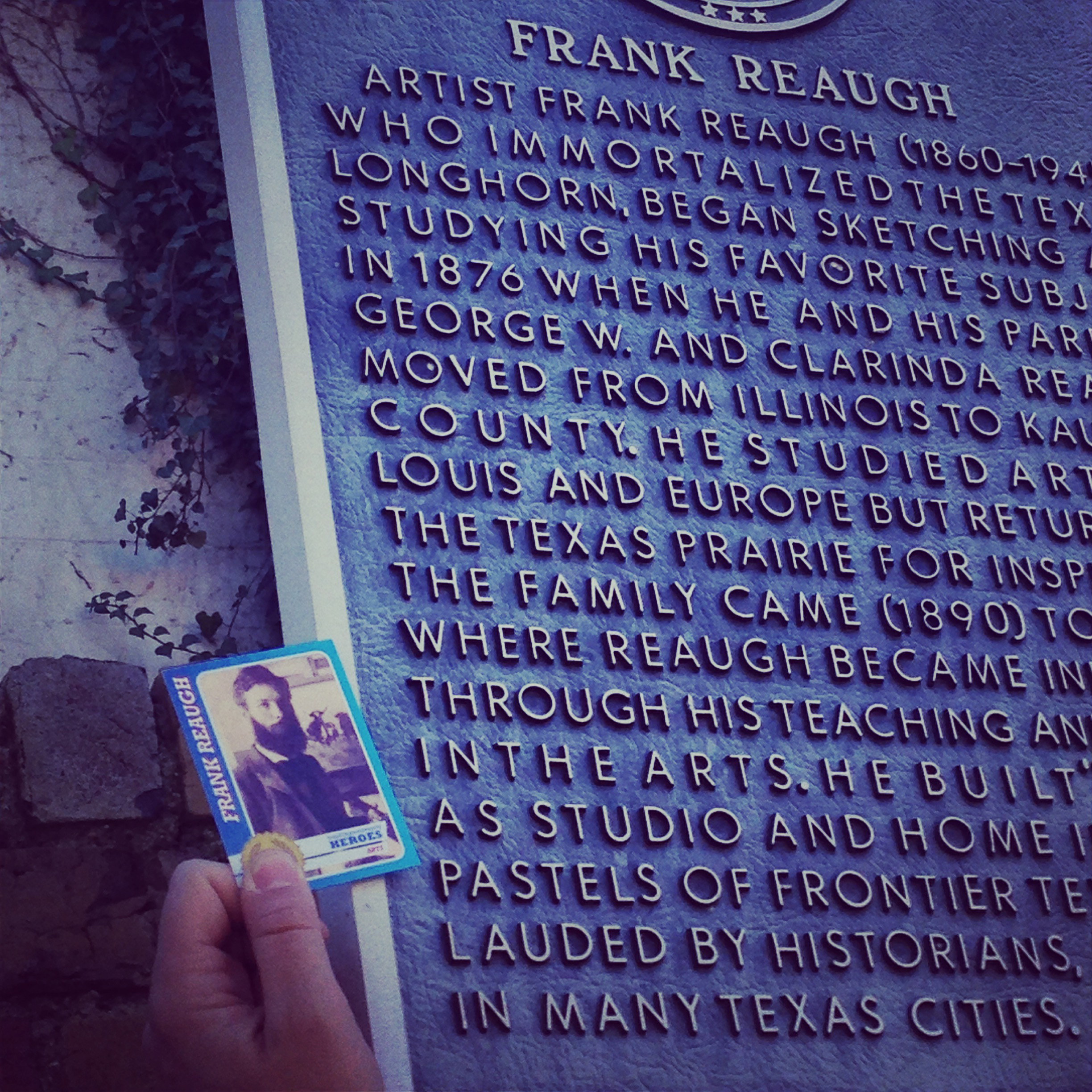








![[bc] team building the floating platform, using lumber and repurposed palettes.](https://images.squarespace-cdn.com/content/v1/5248ebd5e4b0240948a6ceff/1419004388042-H4F9NTQ5Y4LNU9BX28TG/1.jpg)

